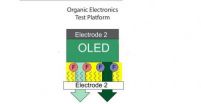(Press-News.org) For the first time, researchers have studied the Black Death bacterium's entire family tree to fully understand how some of the family members evolve to become harmful.
Contrary to popular belief, the team found pathogenic members of this bacterial family do not share a recent common disease-causing ancestor, but instead, have followed parallel evolutionary paths to become harmful.
The Yersinia family of bacteria has many sub species, some of which are harmful and others not. Two of the most feared members of this bacterial family are Yersinia pestis, the bacterium responsible for the bubonic plague or the Black Death, and Yersinia enterocolitica, a major cause of gastroenteritis. Previous studies of this family of bacteria have focused on the harmful or pathogenic species, fragmenting our full understanding of the evolution of these species.
"In order to understand how an organism becomes dangerous or pathogenic, we need to understand their non-pathogenic family members to see what makes them different to the pathogenic forms," says Dr Sandra Reuter, first author from the Wellcome Trust Sanger Institute. "Our dataset has allowed us to redefine the family structure of this unique set of bacteria and give us a full view of how an individual bacterial species can become harmful."
The team sequenced 224 strains of different Yersinia family members from across the world to fully understand of how specific species evolve to become harmful, while others remain harmless.
This unique and detailed dataset describes the parallel evolution of Yersinia pestis and Yersinia enterocolitica; two major disease-causing pathogens in people. The researchers showed that both species, independently of each other, acquired a segment of DNA known as plasmids, as well as the gene ail that allowed them to become pathogenic.
It appears that only these two virulence factors are present in all of the pathogenic Yersinia species.
"Before this study, there was uncertainty about what path these species took to become pathogenic: had they split from a shared common pathogenic ancestor? Or had they evolved independently" says Professor Nicholas Thomson, senior author from the Wellcome Trust Sanger Institute. "What we found were signatures in their genomes which plot the evolutionary path they took.
"Surprisingly they emerged as human pathogens independently from a background of non-pathogenic close relatives. These genetic signatures mark foothold moments of the emergence of these infamous disease-causing bacteria."
The team found that it was not only the acquisition of genes that has proven important to this family of bacteria, but also the loss of genes and the streamlining of metabolic pathways seems to be an important trait for the pathogenic species.
By examining the whole genomes of both the pathogenic and non-pathogenic species, they were able to determine that many of the metabolic functions, lost by the pathogenic species, were ancestral. These functions were probably important for growth in a range of niches, and have been lost rather than gained in specific family lines in the Yersinia family.
"We commonly think bacteria must gain genes to allow them to become pathogens. However, we now know that the loss of genes and the streamlining of the pathogen's metabolic capabilities are key features in the evolution of these disease-causing bacteria," says Dr Alan McNally, senior author from Nottingham Trent University. "This study is shifting our view of the evolution and relationship between species within one family of bacteria."
INFORMATION:
Notes to Editors
Publication Details
Reuter S et al. (2014) Parallel independent evolution of pathogenicity within the genus Yersinia. Proceedings of the National Academy of Sciences
Published in the Early Edition online in advance of print publication.
Funding
Please see the paper for a full list of funding bodies.
Participating Centres
Please see the paper for a full list of participating centres.
Selected Websites
The Wellcome Trust Sanger Institute is one of the world's leading genome centres. Through its ability to conduct research at scale, it is able to engage in bold and long-term exploratory projects that are designed to influence and empower medical science globally. Institute research findings, generated through its own research programmes and through its leading role in international consortia, are being used to develop new diagnostics and treatments for human disease.
http://www.sanger.ac.uk
The Wellcome Trust is a global charitable foundation dedicated to achieving extraordinary improvements in human and animal health. We support the brightest minds in biomedical research and the medical humanities. Our breadth of support includes public engagement, education and the application of research to improve health. We are independent of both political and commercial interests.
http://www.wellcome.ac.uk
Contact details
Don Powell Media Manager
Wellcome Trust Sanger Institute Hinxton, Cambridge, CB10 1SA, UK
Tel +44 (0)1223 496 928
Mobile +44 (0)7753 7753 97
Email press.office@sanger.ac.uk END
A plague in your family
The independent evolution of harmful organisms from 1 bacterial family
2014-04-21
ELSE PRESS RELEASES FROM THIS DATE:
Malfunction in molecular 'proofreader' prevents repair of UV-induced DNA damage
2014-04-21
PITTSBURGH, April 21, 2014 – Malfunctions in the molecular "proofreading" machinery, which repairs structural errors in DNA caused by ultraviolet (UV) light damage, help explain why people who have the disease xeroderma pigmentosum (XP) are at an extremely high risk for developing skin cancer, according to researchers at the University of Pittsburgh School of Medicine and the University of Pittsburgh Cancer Institute (UPCI). Their findings will be published this week in the early online version of the Proceedings of the National Academy of Sciences.
Previous research ...
Penn Medicine researchers uncover hints of a novel mechanism behind general anesthetic action
2014-04-21
(PHILADELPHIA) – Despite decades of common use for surgeries of all kinds, the precise mechanism through which general anesthesia works on the body remains a mystery. This may come as a surprise to the millions of Americans who receive inhaled general anesthesia each year. New research led by the Perelman School of Medicine at the University of Pennsylvania investigated the common anesthetic sevoflurane and found that it binds at multiple key cell membrane protein locations that may contribute to the induction of the anesthetic response. Their findings will appear online ...
Earth Week: Bark beetles change Rocky Mountain stream flows, affect water quality
2014-04-21
On Earth Week--and in fact, every week now--trees in mountains across the western United States are dying, thanks to an infestation of bark beetles that reproduce in the trees' inner bark.
Some species of the beetles, such as the mountain pine beetle, attack and kill live trees. Others live in dead, weakened or dying hosts.
In Colorado alone, the mountain pine beetle has caused the deaths of more than 3.4 million acres of pine trees.
What effect do all these dead trees have on stream flow and water quality? Plenty, according to new research findings reported this ...
Krypton-dating technique allows researchers to accurately date ancient Antarctic ice
2014-04-21
A team of scientists, funded by the National Science Foundation (NSF), has successfully used a new technique to confirm the age of a 120,000-year-old sample of Antarctic ice.
The new dating system is expected to allow scientists to identify ice that is much older, thereby reconstructing climate much farther back into Earth's history and potentially leading to an understanding of the mechanisms that cause the planet to shift into and out of ice ages.
The use of a radiometric-Krypton-dating technique on ice from Antarctica's Taylor Glacier was documented in a paper published ...
Progress made in developing nanoscale electronics
2014-04-21
Scientists are facing a number of barriers as they try to develop circuits that are microscopic in size, including how to reliably control the current that flows through a circuit that is the width of a single molecule.
Alexander Shestopalov, an assistant professor of chemical engineering at the University of Rochester, has done just that, thereby taking us one step closer to nanoscale circuitry.
"Until now, scientists have been unable to reliably direct a charge from one molecule to another," said Shestopalov. "But that's exactly what we need to do when working with ...
A gene within a gene contributes to the aggressiveness of acute myeloid leukemia
2014-04-21
COLUMBUS, Ohio – A small gene that is embedded in a larger, well-known gene is the true leukemia-promoting force usually attributed to the larger gene, according to a new study by researchers at The Ohio State University Comprehensive Cancer Center – Arthur G. James Cancer Hospital and Richard J. Solove Research Institute (OSUCCC – James).
The findings are published in the journal Science Signaling.
The larger host gene is called BAALC (pronounced "Ball C"). The smaller embedded gene is called microRNA-3151 (miR-3151). The study investigated the degree to which each ...
Simulating in tiny steps gave birth to long-sought-after method
2014-04-21
Using computer simulations to predict which drug candidates offer the greatest potential has thus far not been very reliable, because both small drug-like molecules and the amino acids of proteins vary so much in their chemistry. Uppsala researchers have now cunningly managed to develop a method that has proven to be precise, reliable and general.
The largest class of human target proteins for drugs are the so-called G-protein-coupled receptors. They are targets for about 40 per cent of all drugs on the market. These receptors are found in the cell membrane and handle ...
Lack of breeding threatens blue-footed boobies' survival
2014-04-21
Blue-footed Boobies are on the decline in the Galápagos.
A new study appearing in the journal Avian Conservation and Ecology indicates numbers of the iconic birds, known for their bright blue feet and propensity to burst into dance to attract mates, have fallen more than 50 percent in less than 20 years.
The drastic drop in population is probably due to an unexplained disappearance of sardines from the Boobies' diet, said Dave Anderson, a professor of biology at Wake Forest University and the study's principal investigator. This in turn has adult Boobies electing not ...
NASA sees wind shear affecting newborn Tropical Cyclone Jack
2014-04-21
Tropical Cyclone Jack may have hurricane-force winds today, April 21, but strong vertical wind shear is expected to weaken the storm. NASA's TRMM satellite passed overhead and saw that the bulk of the storm's rainfall was being pushed south of the center from the wind shear.
Tropical Cyclone Jack formed on Sunday, April 20, near 13.4 south and 91.1 east, and began moving to the south at 6 knots/6.9 mph/11.1 kph. Jack strengthened quickly and hours after its birth, the storm already had maximum sustained winds near 55 knots/63.2 mph/101.9 kph.
On April 21 at 0900 UTC/5 ...
Taking the pulse of mountain formation in the Andes
2014-04-21
Scientists have long been trying to understand how the Andes and other broad, high-elevation mountain ranges were formed. New research by Carmala Garzione, a professor of earth and environmental sciences at the University of Rochester, and colleagues sheds light on the mystery.
In a paper published in the latest Earth and Planetary Science Letters, Garzione explains that the Altiplano plateau in the central Andes—and most likely the entire mountain range—was formed through a series of rapid growth spurts.
"This study provides increasing evidence that the plateau formed ...
LAST 30 PRESS RELEASES:
New circoviruses discovered in pilot whales and orcas from the North Atlantic
Study finds increase in risk of binge drinking among 12th graders who use 2 or more cannabis products
New paper-based technology could transform cancer drug testing
Opioids: clarifying the concept of safe supply to save lives
New species of tiny pumpkin toadlet discovered in Brazil highlights need for conservation in the mountain forests of Serra do Quiriri
Reciprocity matters--people were more supportive of climate policies in their country if they believed other countries were making significant efforts themselves
Stanford Medicine study shows why mRNA-based COVID-19 vaccines can cause myocarditis
Biobanking opens new windows into human evolution
Sky-high smoke
AI tips off scientists to new drug target to fight, treat mpox
USC researchers develop next-generation CAR T cells that show stronger, safer response in animal models
New study reveals Industrial Revolution’s uneven health impacts across England
Vine-inspired robotic gripper gently lifts heavy and fragile objects
Fingerprint of ancient seafarer found on Scandinavia’s oldest plank boat
Lunar soil analyses reveal how space weathering shapes the Moon’s ultraviolet reflectance
Einstein’s theory comes wrapped up with a bow: astronomers spot star “wobbling” around black hole
Danforth Plant Science Center to lead multi-disciplinary research to enhance stress resilience in bioenergy sorghum
Home-delivered groceries improve blood sugar control for people with diabetes facing food insecurity
MIT researchers identified three cognitive skills we use to infer what someone really means
The Iberian Peninsula is rotating clockwise according to new geodynamic data
SwRI, Trinity University to study stable bacterial proteins in search of medical advances
NIH-led study reveals role of mobile DNA elements in lung cancer progression
Stanford Medicine-led study identifies immune switch critical to autoimmunity, cancer
Research Alert: How the Immune System Stalls Weight Loss
Glucagon-like peptide 1 receptor agonist use and vertebral fracture risk in type 2 diabetes
Nonadherence to cervical cancer screening guidelines in commercially insured US adults
Contraception and castration linked to longer lifespan
An old jeweler’s trick could unlock next-generation nuclear clocks
Older age, chronic kidney disease and cerebrovascular disease linked with increased risk for paralysis and death after West Nile virus infection
New immune role discovered for specialized gut cells linked to celiac disease
[Press-News.org] A plague in your familyThe independent evolution of harmful organisms from 1 bacterial family




